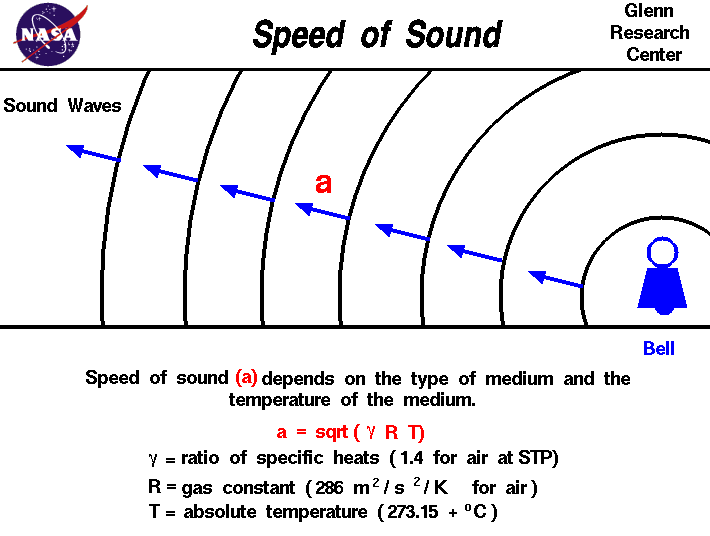

Gauge pressure is the pressure relative to atmospheric pressure it is positive for pressures above atmospheric pressure, and negative for pressures below it. The graph shows gauge pressure (P gauge) versus distance x from the source.
The speed of sound depends on series#
You may recall from the chapter on waves that areas of compression and rarefaction in longitudinal waves (such as sound) are analogous to crests and troughs in transverse waves.įigure 14.4 After many vibrations, there is a series of compressions and rarefactions that have been transmitted from the string as a sound wave. Some of the energy is lost in the form of thermal energy transferred to the air. The pressure disturbance moves through the air as longitudinal waves with the same frequency as the string. regions are compressions, and the low pressure regions are rarefactions. This creates slightly higher and lower pressures. As the string oscillates back and forth, part of the string’s energy goes into compressing and expanding the surrounding air. Some sound waves can be characterized as periodic waves, which means that the atoms that make up the matter experience simple harmonic motion.Ī vibrating string produces a sound wave as illustrated in Figure 14.2, Figure 14.3, and Figure 14.4. A disturbance is anything that is moved from its state of equilibrium. More specifically, sound is defined to be a disturbance of matter that is transmitted from its source outward. Review properties of waves-amplitude, period, frequency, velocity and their inter-relations. Review waves and types of waves-mechanical and non-mechanical, transverse and longitudinal, pulse and periodic. (B) investigate and analyze characteristics of waves, including velocity, frequency, amplitude, and wavelength, and calculate using the relationship between wave speed, frequency, and wavelength.
The speed of sound depends on manual#
In addition, the High School Physics Laboratory Manual addresses content in this section in the lab titled: Waves, as well as the following standards:


So this is why the temperature dependence for liquids and solids, uh, is not as noticeable.The learning objectives in this section will help your students master the following standards: So we have some solid block type thing here, but they The main point here is that in a gas, the molecules, or more farther apart, compares to the liquid and solids. Oh, you know, around here, forming with the shape of the container and then in a solid there, also much closer together than the gas. They're spread out also all throughout this and then in a a liquid they our closer together. So I could be its strong some cartoon examples here. Uh, no sound can also travel to solids or in liquids, but in in solids and liquids, the particles are typically closer together, then there compared to gases. If the temperature decreases, the speed of sound will decrease. Eso the transfer of energy or the disturbance can travel faster if the temperature goes up, the wave disturbance going to control faster to the medium because of the the more frequent collisions and so the speed of sound increases. Uh, we also know that when the temperature of the medium goes up, the molecule start moving faster and they start crashing into each other more frequently. Why does the speed of sound depend on the temperature of the medium? Well, we know that the sound waves are composed of vibrating particles or molecules that transfer energy to turn to neighbouring molecules. The speed of sound depends on the temperature of the medium.


 0 kommentar(er)
0 kommentar(er)
